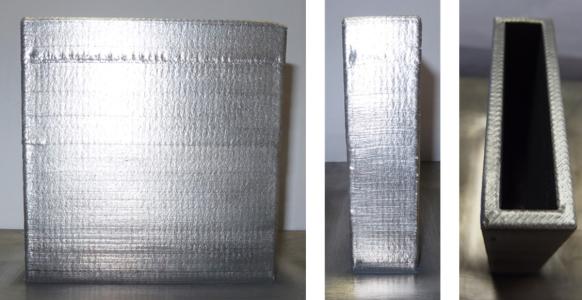Advanced aluminium alloys tailored for Additive Manufacturing space applications, targeting high end structural spacecraft parts
Programme
GSTP
Programme Reference
G61A-019QT
Prime Contractor
CRM CENTRE DE RECHERCHES METALLURGIQUES ASBL
Start Date
End Date
Status
Closed
Country
Belgium

Objectives
To develop new advanced aluminium alloys which can take full advantage of the Additive Manufacturing (AM) process to deliver products with high end structural performance
Description
Additive Manufacturing is rapidly emerging as an advanced manufacturing technique, which will be adopted by the European Space Industry. Since the method involves the process of melting and solidification, it is particularly suited to those materials that are readily weldable and have good castability. Since titanium and its alloys are readily weldable by a number of fusion welding techniques, it is not surprising that in the majority of current activities, titanium is the material of choice.
For applications in aerospace and space which require structural performance (high strength, toughness and/or damage tolerance), the choice of aluminium is usually limited to 2000 series (Al-Cu-Mg and Al-Li-Cu) and 7000 series (Al-Zn-Mg-Cu) alloys. Unfortunately, the majority of these alloys are not recommended for fusion welding as they deliver welded joints which either have issues concerning the formation of defects (cracks, pores etc.) or poor mechanical performance. A strong need therefore exists, to develop a new generation of advanced aluminium alloys that can take full advantage of the AM process whilst delivering the required high-end structural performance. This will be achieved through a combination of alloy design, microstructural modelling, manufacturing of samples and testing.
The activity will consist of the following tasks:
- Identification of possible structures within spacecraft and launchers applications that can take advantage of the AM process.
- Comprehensive literature review targeting the field of Rapid Solidification of aluminium alloys, particularly focusing on inert gas atomization of powders.
- Microstructural modelling to develop relationships between the AM process and the microstructure of advanced aluminium alloys (extended solid solubility, formation of metastable structures etc).
- Grain size control using optimised AM process parameters in combination with dopants such as TiB2 and TiC.
- Strength and performance improvement using alloying additions based on Sc, Hf etc.
- Manufacturing of samples and demonstrators of the identified structural applications for comparison with a) state of the art manufacturing routes and b) non-optimised AM aluminium powders.
Application Domain
Generic Technologies
Technology Domain
24 - Materials and Manufacturing Processes
Competence Domain
2-Structures, Mechanisms, Materials, Thermal
Keywords
38-Advanced Manufacturing
Initial TRL
TRL 3
Target TRL
TRL 5
Achieved TRL
TRL 5
Public Document
Executive Summary
